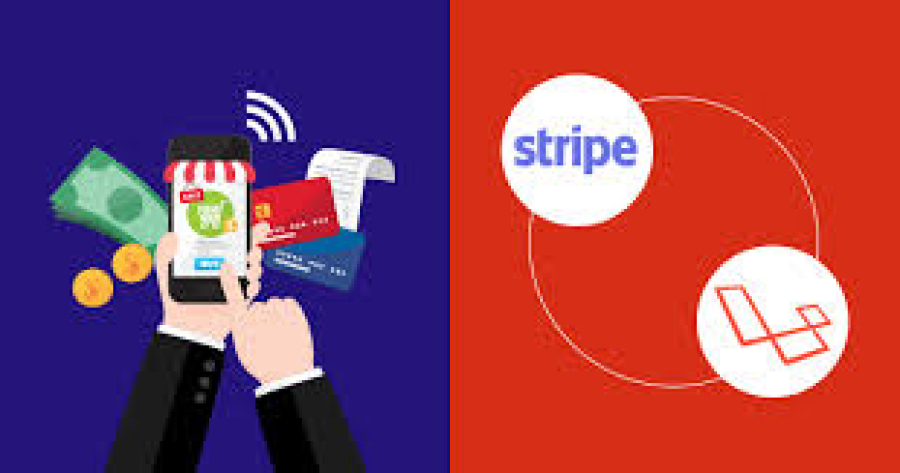How to Use Laravel Livewire for Interactive Web Pages
Building interactive web pages has always required JavaScript frameworks like Vue.js or React. However, Laravel Livewire offers a powerful alternative by allowing developers to create dynamic, reactive components without writing JavaScript.
At FreelancerBridge, we help developers and freelancers simplify complex web development tasks. In this guide, we’ll explore how Laravel Livewire enhances interactivity, its benefits, and how you can use it to build powerful web applications.
1. What is Laravel Livewire?
Laravel Livewire is a full-stack framework that enables developers to create real-time, interactive web applications without needing external JavaScript frameworks. It allows you to build components that update dynamically without requiring a full page reload.
Why Use Laravel Livewire?
No Need for JavaScript Frameworks – Works seamlessly within Laravel without requiring Vue.js or React.
Real-Time Updates – Data changes are reflected instantly on the page without refreshing.
Simplifies Development – Ideal for building complex, dynamic interfaces with minimal effort.
Works with Blade Templates – Uses Laravel’s native templating engine for easy integration.
Livewire makes modern web development more accessible by keeping everything within the Laravel ecosystem.
2. How Laravel Livewire Works
Livewire enables server-side rendering with real-time UI updates. It works by sending AJAX requests to the server whenever a user interacts with a Livewire component. The server processes the request and returns only the updated HTML, eliminating the need for full-page refreshes.
How Livewire Processes Requests:
User interacts with a Livewire component (e.g., clicks a button or types in a form).
An AJAX request is sent to the server, processing the request.
Livewire updates only the necessary part of the page, improving speed and performance.
This process ensures fast and smooth user interactions with minimal frontend complexity.
3. Why Choose Laravel Livewire for Interactive Web Pages?
Livewire is perfect for building interactive web applications with server-side rendering and real-time interactivity.
Key Benefits of Using Livewire:
✅ Reduces Development Time – No need to write separate JavaScript code.
✅ Enhances User Experience – Real-time updates improve responsiveness.
✅ Lightweight & Fast – No extra JavaScript dependencies required.
✅ SEO-Friendly – Uses traditional Laravel routing, making it easier to index.
✅ Secure – Protects against cross-site scripting (XSS) and other security threats.
Whether you're building a dashboard, e-commerce site, or real-time chat application, Livewire provides a clean and efficient way to create interactive pages.
4. Common Use Cases for Laravel Livewire
Laravel Livewire is used for various real-world applications, including:
1. Dynamic Forms
Forms that update in real-time based on user input.
Live validation messages without requiring page reloads.
2. Live Search & Filtering
Search results update instantly as users type.
Filtering options dynamically adjust product listings.
3. Interactive Tables & Pagination
Tables that update without refreshing the page.
Paginated lists that fetch new data instantly.
4. Real-Time Notifications
Live alerts for new messages, orders, or system updates.
5. E-commerce Cart Management
Add and remove items from a cart without reloading the page.
Laravel Livewire is ideal for applications requiring real-time updates and dynamic interactions.
5. Best Practices for Using Laravel Livewire
To maximize efficiency when working with Laravel Livewire, follow these best practices:
1. Optimize Performance
Reduce unnecessary re-renders by structuring components efficiently.
Use pagination and lazy loading for large datasets.
2. Secure User Inputs
Always use Laravel validation rules to prevent security vulnerabilities.
Avoid exposing sensitive data directly in Livewire components.
3. Minimize Server Requests
Limit the number of AJAX requests by debouncing user input (e.g., delaying API calls when typing).
Combine multiple updates into a single request to reduce load time.
4. Use Events for Communication
Use Livewire events to trigger changes across components.
Maintain clean and modular code by separating logic into different Livewire components.
5. Leverage Caching
Use Laravel caching to improve performance and reduce server load.
Following these practices will ensure smooth, scalable, and high-performance applications using Livewire.
6. Laravel Livewire vs Vue.js: Which One Should You Choose?
Developers often compare Livewire and Vue.js for interactive applications. Here’s how they differ:
Feature Laravel Livewire Vue.js
Development Complexity Easy Moderate
Performance Server-side processing Client-side rendering
JavaScript Requirement ❌ Not required ✅ Required
Best For Forms, dashboards, admin panels SPAs, complex UIs
SEO-Friendly ✅ Yes ❌ No (Requires SSR)
When to Use Livewire?
If you want to avoid JavaScript frameworks and keep everything in Laravel.
When building interactive forms, search filters, or real-time tables.
If SEO is a priority for your web application.
When to Use Vue.js?
If you need advanced frontend interactivity beyond what Livewire offers.
When working with large-scale SPAs that require client-side state management.
For Laravel-based projects where simplicity and ease of use are essential, Livewire is the better choice.
7. Common Issues & Troubleshooting in Livewire
Developers may encounter some common issues when working with Livewire. Here’s how to fix them:
Issue 1: Livewire Components Not Updating Properly
✔ Solution: Clear Laravel cache and refresh the page using:
php artisan cache:clear
php artisan view:clear
Issue 2: Livewire Not Sending Requests
✔ Solution: Ensure your application has CSRF token setup correctly in the Blade template.
Issue 3: Livewire is Slow with Large Data
✔ Solution: Use pagination and lazy loading to reduce server requests.
By following best practices and troubleshooting common issues, you can ensure smooth performance with Laravel Livewire.
Conclusion
Laravel Livewire is a game-changer for building interactive web pages without writing JavaScript. It allows developers to create dynamic and real-time applications within Laravel, making development faster, easier, and more efficient.
With its ability to handle real-time user interactions, live updates, and form submissions, Livewire is a must-have tool for Laravel developers. Whether you're a freelancer, startup, or enterprise, integrating Livewire can significantly improve user experience and development efficiency.
At FreelancerBridge, we specialize in helping developers leverage Laravel technologies to build high-quality web applications. Start using Laravel Livewire today and enhance your web development workflow!


 by Emily
by Emily




